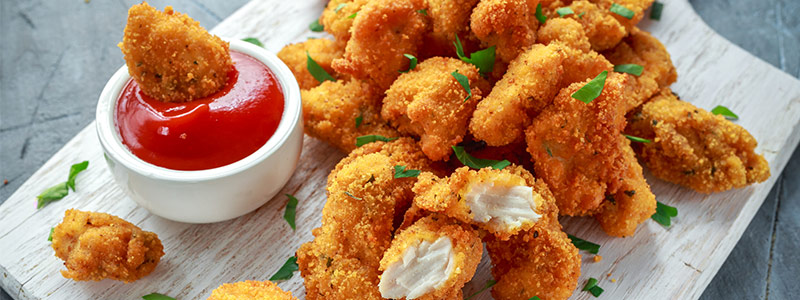The coating process has evolved greatly since its commercial introduction with seasoned breading mix for seafood in the late 1930s. Coatings deliver a desirable product appearance, texture, and taste, while locking in flavor and moisture. Today, every food imaginable has been coated, and commercial coating formulations have become more sophisticated and elaborate.
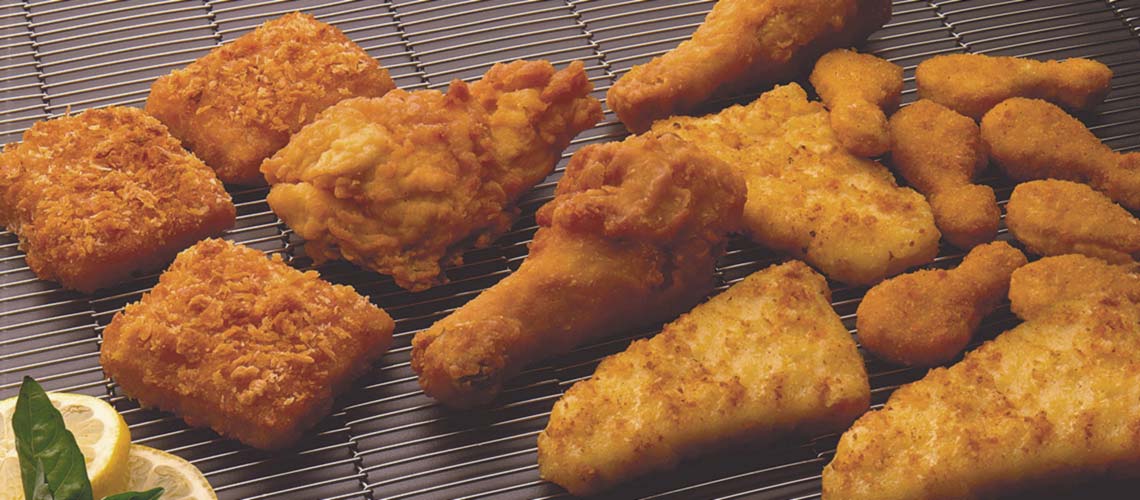
Prepared foods manufacturers combine a variety of spices and seasonings and use different coating methods to create unique products and flavor profiles. Following are some common types of coating ingredients and methods of use:
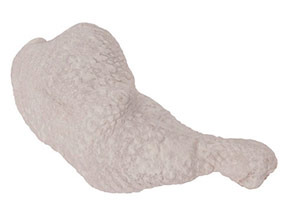 Pre-dusts are a blend of finely ground grain-based coatings (i.e., dry batter) and are applied as the first layer in a coating system. A pre-dust provides a binding surface to which batter can attach and contributes to increasing coating pick-up. Agents are often added to pre-dusts, frequently used as a flavor carrier and to help other coatings bind to the substrate. Flavorings in the pre-dust are partially protected during the frying process, making their impact on flavor enhancement more noticeable. Typically, a pre-dusted product has a more uniform coating, an improved appearance and texture, and a reduced coating blow-off during the frying process.
Pre-dusts are a blend of finely ground grain-based coatings (i.e., dry batter) and are applied as the first layer in a coating system. A pre-dust provides a binding surface to which batter can attach and contributes to increasing coating pick-up. Agents are often added to pre-dusts, frequently used as a flavor carrier and to help other coatings bind to the substrate. Flavorings in the pre-dust are partially protected during the frying process, making their impact on flavor enhancement more noticeable. Typically, a pre-dusted product has a more uniform coating, an improved appearance and texture, and a reduced coating blow-off during the frying process.
Standard batters are generally a blend of several ingredients, such as flour, starches, and water, and provide an adhesive surface so seasoned flour or breadcrumb coatings can stick. To coat specialty products that are slick or have a dense surface, adhesive agents are often added to batters. Batters with flavors and colors help to create final taste and appearance characteristics. Batter viscosity is key to obtaining the desired coating pickup, adhesiveness, and texture.
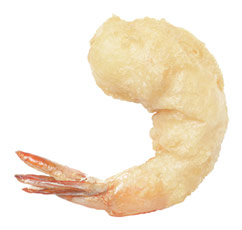 Tempura batter is prepared and blended like other batters, except leavening agents are added into the mixture. The leavening agents release gas when fried, resulting in puffing of the coating and the desired texture that is typical of tempura-battered products. In many cases, this type of batter needs to be held in chilled/refrigerated batter mixing tanks to prevent the gases from dissipating before the product is fried. In addition, star-wheel transfers from the batter applicator to the fryer minimize the contact surface to prevent the delicate tempura batter from being sheared off the substrate.
Tempura batter is prepared and blended like other batters, except leavening agents are added into the mixture. The leavening agents release gas when fried, resulting in puffing of the coating and the desired texture that is typical of tempura-battered products. In many cases, this type of batter needs to be held in chilled/refrigerated batter mixing tanks to prevent the gases from dissipating before the product is fried. In addition, star-wheel transfers from the batter applicator to the fryer minimize the contact surface to prevent the delicate tempura batter from being sheared off the substrate.
Wash batters are combinations of water, egg, starches, and agents for adhesion, color, and flavor that provide a unique surface texture to fried products, such as french fries and seafood products. There are instances where a gum-based clear gel batter is used to protect product from dehydration during the freezing and re-thermalization processes.
Marinades and glazes are combinations of flavorings, seasonings, water, and juices that enhance product taste, mouthfeel, and appearance. Marinades are liquids that are injected into the product or poured onto its surface to increase flavor, moisture, and tenderness. The marinade may be left on the product for a few minutes to several hours depending on the desired result. Glazes can be dry or liquid and are applied only to the product surface.
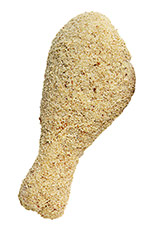 Each breading type has a characteristic flavor, size, texture, and color. Adding spices, nuts, and other flavorings, as well as different flours, starches, and crumbs, can augment breading taste and appearance in nearly limitless combinations.
Each breading type has a characteristic flavor, size, texture, and color. Adding spices, nuts, and other flavorings, as well as different flours, starches, and crumbs, can augment breading taste and appearance in nearly limitless combinations.
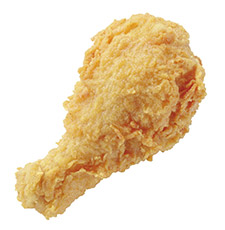 Flours for food coating are a simple mixture of various types of flour, mostly wheat, and are one of the most widely used coatings. Flour is a natural ground powder used for carrying flavors and colors and is often mixed with various spices, starches, and other ingredients. It produces a home-style appearance that is popular, while its flexibility and tolerance to frying make it successful for producers.
Flours for food coating are a simple mixture of various types of flour, mostly wheat, and are one of the most widely used coatings. Flour is a natural ground powder used for carrying flavors and colors and is often mixed with various spices, starches, and other ingredients. It produces a home-style appearance that is popular, while its flexibility and tolerance to frying make it successful for producers.
Cracker meal and saltine crackers are produced by the same basic process. The dough mixture consisting of flour and water is sheeted and baked; after baking, the cracker is further dried then ground to specific granulation sizes. Most cracker meal is finely ground. It is a very durable coating and is often used in long fry applications because of its low oil absorption characteristic and because it does not develop too much color while frying. Versatile and low-cost, cracker meal is a very popular as breading.
Extruded crumb is produced from high content starch ingredients cooked continuously under pressure. At the end of the process, the sudden release of pressure causes the quick expansion of moisture, which in turn expands the extrusion. This inexpensive process allows high production volumes of crumbs that have light to medium density.
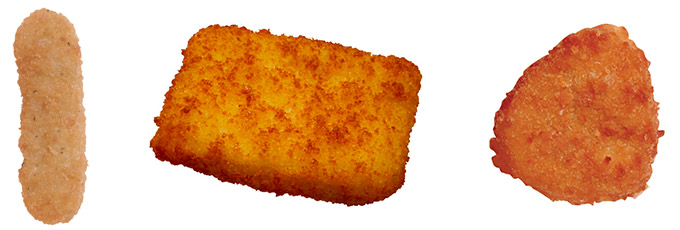
American crumb is usually baked as a continuous bread loaf but contains less water in the dough and has a dark and a hardened crust after baking. Because of its hard texture, it is largely used to coat product, such as croquettes and fish. It is available in grist sizes from fine to coarse and provides the coverage and appearance needed on the product being coated. To enhance appearance, coloring agents, such as paprika and turmeric, are used to develop a rich brown color during frying.
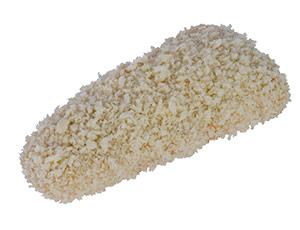 Japanese crumb (i.e., Panko) is manufactured with yeast, using an electrical induction process. Yeast contributes to the open and porous structure of this elongated and uniquely shaped crumb. The texture, lightness, and crunchy bite of this crumb is unlike any other breading. Compared with other breadings, the coating surface is remarkably free of oil when reconstituted. Special care must be taken in handling this fragile breading to maintain the integrity of the particle shape and size for as long as possible.
Japanese crumb (i.e., Panko) is manufactured with yeast, using an electrical induction process. Yeast contributes to the open and porous structure of this elongated and uniquely shaped crumb. The texture, lightness, and crunchy bite of this crumb is unlike any other breading. Compared with other breadings, the coating surface is remarkably free of oil when reconstituted. Special care must be taken in handling this fragile breading to maintain the integrity of the particle shape and size for as long as possible.
Fresh crumb is not dried like other breading and must be refrigerated for extended storage periods. When fried, fresh crumb is desirable for the crispy texture and the delicate appearance it gives to the coated product.
